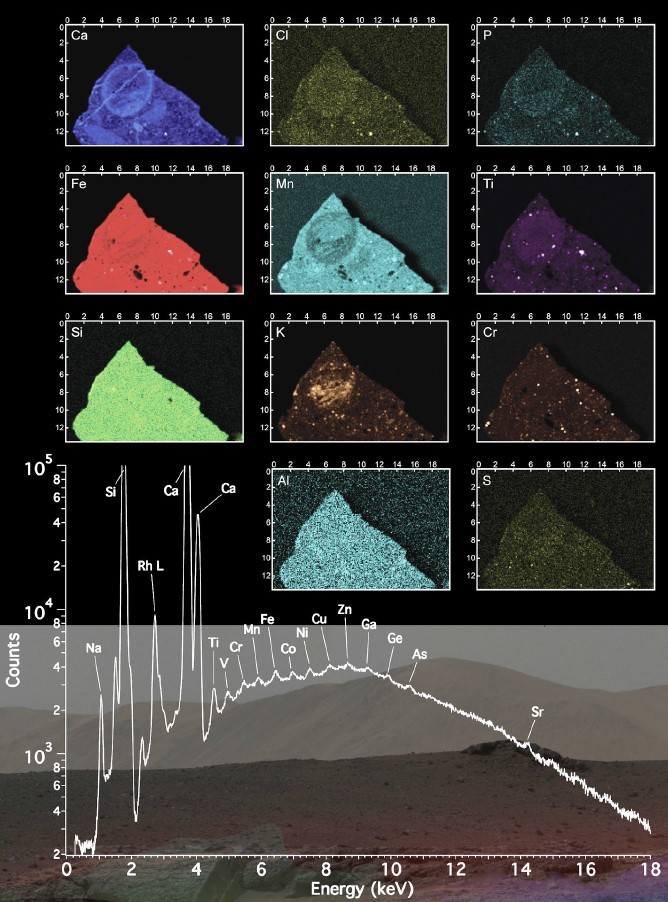
Abstract
PIXL (Planetary Instrument for X-ray Lithochemistry) is a micro-focus X-ray fluorescence
instrument for examining fine scale chemical variations in rocks and soils on planetary
surfaces. Selected for flight on the Mars 2020 rover science payload, PIXL can measure
elemental chemistry of tiny features observed in rocks, such as individual sand grains,
veinlets, cements, concretions and crystals.
The PIXL sensor head is mounted on the turret at the end of the Mars 2020 rover arm.
It combines a novel, 28 kV power supply (S. Battel, University of Michigan) with a newly
developed side-window, grounded-cathode x-ray tube (Moxtek), and a polycapillary x-ray
optic (XOS) to generate a 120 ?m diameter x-ray beam that is rastered over a 35 mm diameter
field of view. Two SDD detectors are used to collect the fluoresced spectra and an optical
fiducial subsystem is used to image rock morphology, guide placement of PIXL, and determine
the x-ray beam location on the targeted surface.
The overall PIXL design, performance and operational concepts will be presented, along with
a summary of development test results.
Biography
Dr. Lawrence Wade is Chief Engineer for the Mars 2020 PIXL X-ray fluorescence spectrometer
now being built at NASA's Jet Propulsion Laboratory. Dr. Wade has spent most of his career
developing instruments for in-situ and space-borne remote sensing experiments. These efforts
include super-resolution (<10 nm) optical microscopes for imaging biological samples in visible
wavelengths, cryogenic coolers for many infrared and microwave sensors, and spacecraft designs for
observational astronomy and cosmology missions (Planck, Herschel, Webb). Dr. Wade was a
Co-Investigator on both the Low Frequency, and High Frequency Instruments on the European Space
Agency's Planck Cosmic Microwave Background mission. He has 7 patents, over 200 publications.
He received a Ph.D. in Molecular Biology and Biochemistry from California Institute of Technology
in 2011 and a B.A. in Physics from the California State Fullerton in 1980. His awards include a Nasa
Exceptional Technology Achievement Medal in 2010 and being named in the 2018 Gruber Cosmology Prize.

PIXL maps features by acquiring spectra as its x-ray beam
is rastered over the surface. Each pixel in a map has a
full XRF spectrum associate with it, such as the one shown,
from NIST 612 standard reference material (containing trace
elements at tens of ppm). The element maps, seen above, of
the NWA7034 Martian Meteorite "Black Beauty" were derived
from spectra acquired by the PIXL breadboard micro-XRF.